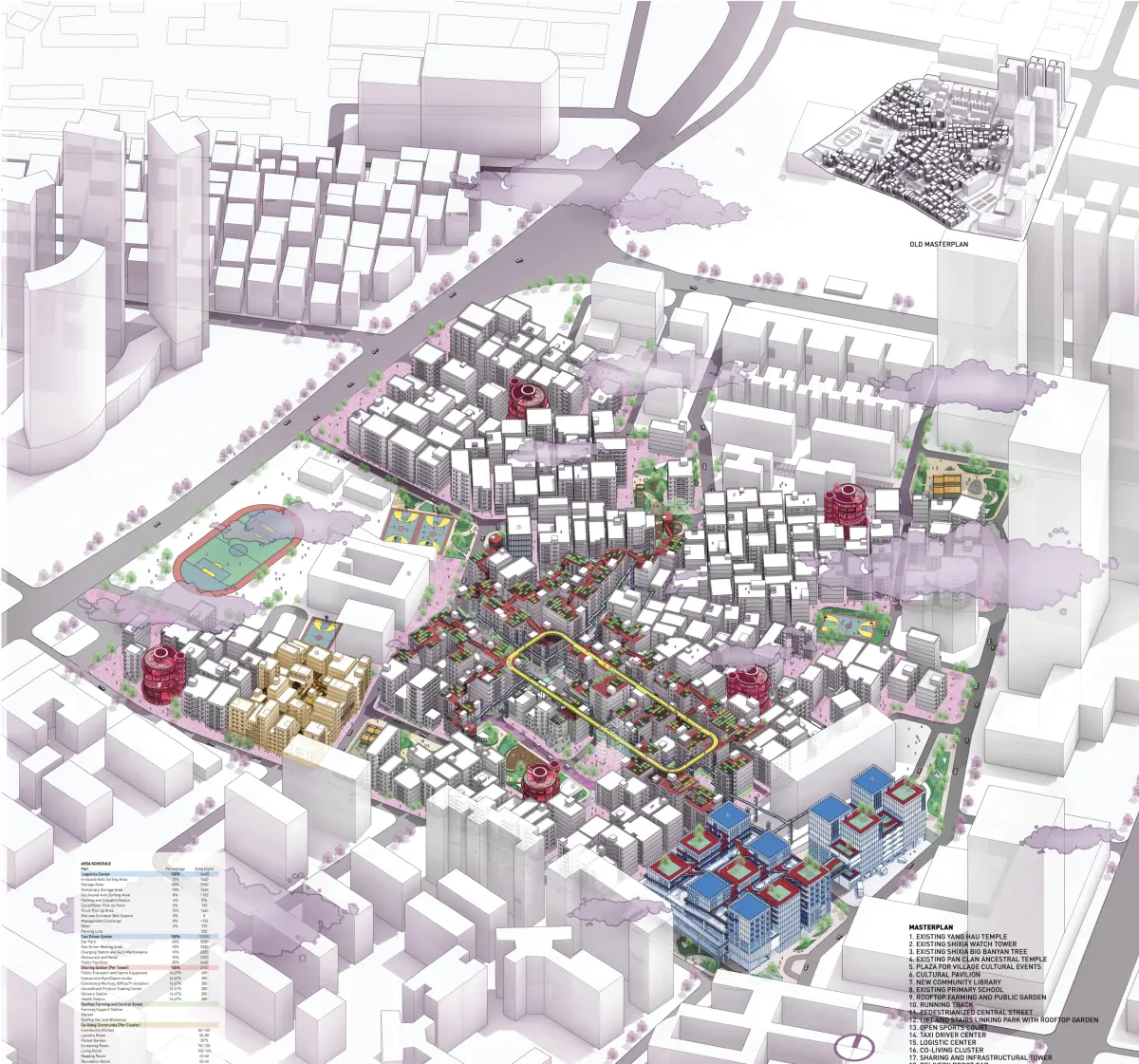
New Urban Village
BY Lin Yingying
SUPERVISED BY Adj. Senior Lecturer, Ho Weng Hin
STUDIO THEME FUTURES FOR OUR MODERN PAST
Abstract
Urban Village, as a unique phenomenon in the urbanization of Chinese cities, has long been a tough issue to tackle. Numbers of the villages were wiped out to make way for higher plot ratios regardless of their inconspicuous but significant role in city. This thesis project here challenges such traditional mindsets, reveals the value, and potentials of urban village conservation, especially in the context of Shenzhen, the country’s fastest-growing city. Shixia Village is picked as a site for demonstration. Through reprogramming and spatial intervention, the scheme proactively conserves and strengthens the village’s urban quality as well as social landscape, while ensuring economic profitability, living quality, and sustainability. The incorporation of new technologies like automated delivery systems and urban farming technologies improves spatial and production efficiency. In this sense, urban villages not only support the rest of the city as nodes of an invisible infrastructural network. It can offer an alternative way of working and living, nourished from the past, no less than the massively produced “modern norm”.
Supervisor Comments
New Urban Village (Lin Ying Ying) interrogates the future prospects of the compact, superdense typology that sprung up alongside Shenzhen’s meteoric rise as an economic powerhouse. The demonstrative project is underpinned by a strong sense of social justice, and convincingly argues that urban villages can, and should be viably revitalised and transformed to continue providing the essential life support to the city, while preserving their autonomy and sustaining the social structure and fabric. A new mixed use taxi drivers’ amenity centre cum logistic hub anchors the urban village as the main ‘gateway’ building connected to the metropolis, while housing blocks undergo different degrees of intervention to improve liveability and conviviality. Compact high-rise ‘sharing towers’ are carefully inserted into strategic ‘urban acupoints’ to redefine and expand the public realm that is lacking currently. The scheme demonstrates potential scalability and applicability for the depleting stock of urban villages in Shenzhen to achieve urban rehabilitation and socio-economic progress.
- Adj. Senior Lecturer, Ho Weng Hin